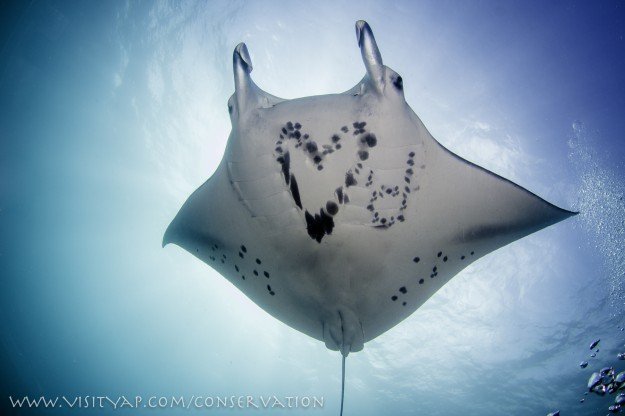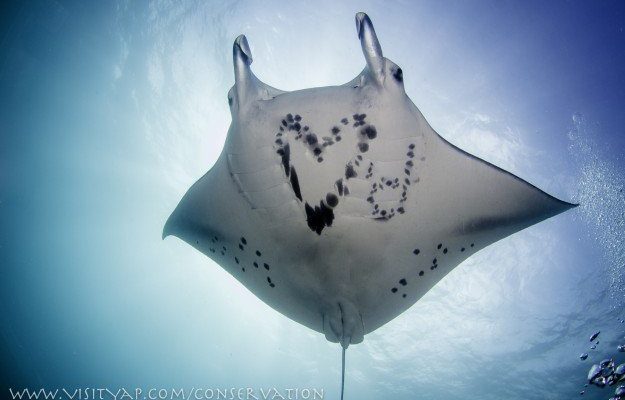
Understanding Manta Rays
Manta rays belong to the family Mobulidae and are among the largest rays in the ocean, with some species like the giant oceanic manta ray reaching wingspans of up to 29 feet! They are filter feeders, meaning they consume plankton and small fish by effectively “scooping” them up as they swim through the water. Their unique method of feeding, combined with their impressive size, makes them a highlight for divers and ocean enthusiasts alike.
There are two main species of manta rays: the giant manta ray (Mobula birostris) and the reef manta ray (Mobula alfredi). Both have different habitats and behaviors. Giant manta rays are often found in deeper waters of the open ocean, while reef mantas tend to stick around coastal areas. Understanding their specific needs is essential for conservation efforts, as each species faces its own set of challenges.
Manta rays are not just fascinating to observe—they also play a vital role in their ecosystem. By filtering out plankton, they help maintain the health of marine food webs. Their presence is an indicator of healthy ocean conditions. So, when we ask whether manta rays are endangered, it’s really a question about the health of our oceans as well.
Current Conservation Status
Manta rays have been classified as vulnerable by the International Union for Conservation of Nature (IUCN). This designation is not taken lightly and indicates a genuine concern for their survival. Factors like climate change, overfishing, and marine habitat destruction contribute significantly to their declining populations.
The giant manta ray is particularly at risk, listed as endangered in some regions. Certain areas have seen populations drop by as much as 50% over the last few decades. The decline can be attributed to various factors, primarily related to human activities. Addressing these issues isn’t just an environmental concern; it’s an urgent call to action to protect our oceans.
You might be wondering, “What specific threats do manta rays face?” Let’s break it down:
- Bycatch: Manta rays often get caught unintentionally in fishing nets, which can lead to injuries or death.
- Overfishing: In some countries, manta ray gills are in high demand for traditional medicine and culinary delicacies.
- Habitat Loss: Coastal development and pollution are severely damaging the reefs and waters where manta rays thrive.
Conservation Efforts Underway
Recognizing the plight of manta rays has prompted various conservation initiatives worldwide. Organizations, governments, and local communities are coming together to protect these majestic creatures. For instance, a significant part of conservation work involves creating marine protected areas (MPAs) where fishing and other damaging activities are limited or prohibited.
Several countries, including the Maldives and Mexico, have established laws to protect manta rays specifically. In these regions, there are strict regulations against fishing for manta rays and penalties for illegal activities. Education and awareness campaigns are also essential components of these efforts. They help local communities understand the importance of preserving manta rays and their habitats.
Additionally, researchers are increasingly relying on technology to track manta ray populations and understand their migratory patterns. Using satellite tagging, scientists can monitor their movements and gather data that is crucial for effective conservation strategies. This information can lead to better management practices and more effective policies aimed at helping these endangered species.
How You Can Help
Even if you’re not a marine biologist, there are plenty of ways you can get involved in the conservation of manta rays. Here are a few simple steps you can take to make a difference:
- Support Sustainable Seafood: Choosing seafood that is caught sustainably can reduce the pressure on marine ecosystems.
- Advocate for Marine Protected Areas: Lobbying for policies that protect marine habitats is vital for maintaining healthy ecosystems where manta rays can thrive.
- Raise Awareness: Sharing information with friends and family can help spread the word about manta ray conservation.
By taking small steps in your everyday life, you can contribute to a larger movement aimed at saving these incredible creatures. Every little bit helps!
The Role of Education and Research
Education plays a crucial part in conservation. Many organizations and marine sanctuaries are focusing on teaching local communities about the ecological importance of manta rays. They provide valuable resources, workshops, and even diving programs that emphasize conservation.
Research is equally important. Ongoing scientific studies help us better understand manta ray biology, behavior, and conservation needs. For example, researchers are studying reproduction rates to help predict population recovery and identify critical breeding grounds. This research is vital for targeted conservation efforts that address the specific challenges faced by manta rays.
Here’s the thing: when you support education and research initiatives, you’re not just helping manta rays, but you’re also protecting the broader marine ecosystem. A healthy ocean benefits all marine life, including the fish we eat and the coral reefs we cherish.
The question of whether manta rays are endangered isn’t just about their survival—it’s about the health of our oceans and our responsibility as stewards of the Earth. By understanding the threats they face and the ongoing conservation efforts, we can all play a part in ensuring that future generations experience the wonder of seeing these magnificent creatures glide through our waters.
In closing, remember that every action counts. Whether it’s spreading awareness, advocating for better policies, or making sustainable choices, you can help protect manta rays. Together, let’s ensure that these gentle giants continue to thrive in our oceans for years to come.

